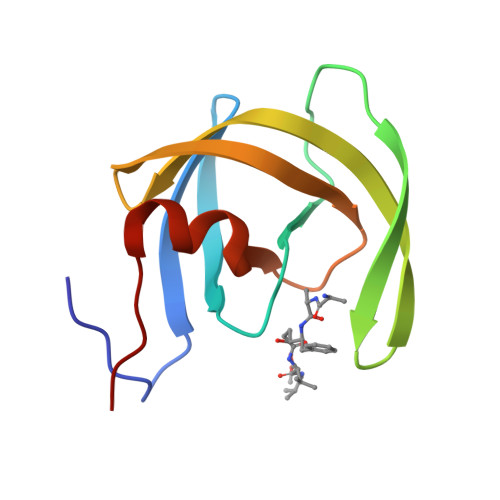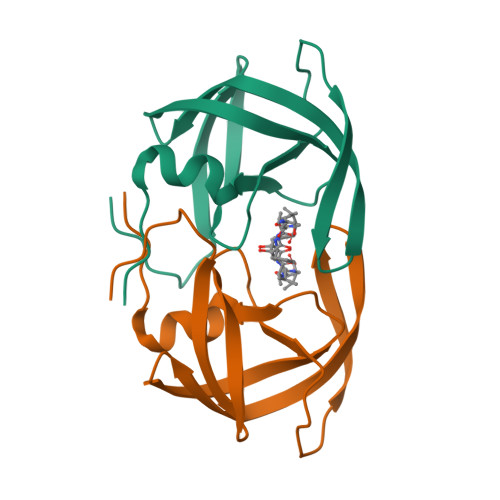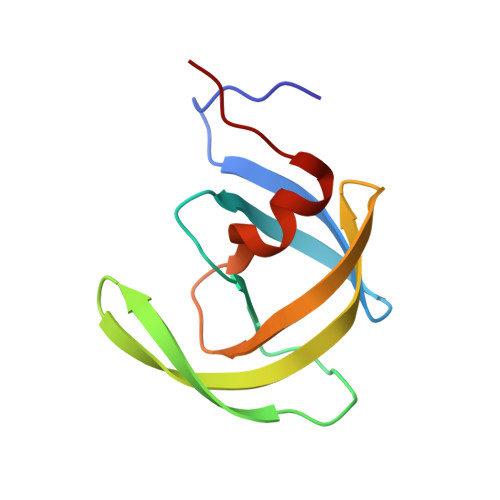The crystal structures at 2.2-A resolution of hydroxyethylene-based inhibitors bound to human immunodeficiency virus type 1 protease show that the inhibitors are present in two distinct orientations.
Murthy, K.H., Winborne, E.L., Minnich, M.D., Culp, J.S., Debouck, C.(1992) J Biological Chem 267: 22770-22778
- PubMed: 1429626
- Primary Citation of Related Structures:
1HEF, 1HEG - PubMed Abstract:
As part of a structure-based drug design program directed against enzyme targets in the human immunodeficiency virus (HIV), we have determined the three-dimensional structures of the HIV type 1 protease complexed with two hydroxyethylene-based inhibitors. The inhibitors (SKF 107457 and SKF 108738) are hexapeptide substrate analogues with the scissile bond being replaced by a hydroxyethylene isostere. The structures were determined using x-ray diffraction data to 2.2 A measured at the Cornell High Energy Synchrotron Source on hexagonal crystals of each of the complexes. The structures have been extensively refined using a reciprocal space least-squares method to conventional crystallographic R factors of 0.186 and 0.159, respectively. The protein structure differs from that in the unliganded state of the enzyme and is most similar to that of the structure of the other reported (Jaskolski, M., Tomasselli, A. G., Sawyer, T. K., Staples, D. G., Heinrikson, R. L., Schneider, J., Kent, S. B. H., and Wlodawer, A. (1990) Biochemistry 29, 5889-5907) hydroxyethylene-based inhibitor complex. Unlike in that structure, however, the inhibitors are observed, in the present crystal structures, in two equally abundant orientations that are a consequence of the homodimeric nature of the enzyme coupled with the asymmetric structures of the inhibitors. Although the differences between the two inhibitors used in the present study are confined to the P1' site, the van der Waals interactions made by the inhibitor atoms with the amino acid residues in the protein differ throughout the structures of the inhibitors.
Organizational Affiliation:
Department of Macro Molecular Sciences, SmithKline Beecham Pharmaceuticals, King of Prussia, Pennsylvania 19406.



















